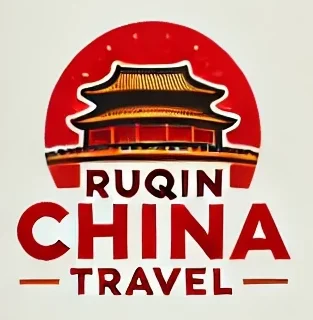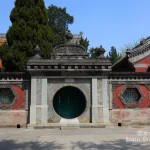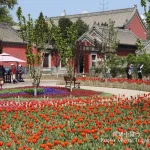Beijing Zizhuyuan Park — also known as Purple Bamboo Park — is a hidden gem that blends the elegance of southern Chinese gardens with the grandeur of northern imperial design. It’s more than just a scenic retreat; it’s the only royal garden in Beijing that’s completely free to enter.
👉Explore Our Curated Beijing Tours
In this guide, you’ll find everything you need to plan your visit — from the park’s cultural history and seasonal highlights to transportation tips, top activities, and nearby attractions worth exploring. Let’s start planning your perfect day in Purple Bamboo Park.
🏛️Beijing Zizhuyuan Park Origin
Zizhuyuan Park takes its name from the Fuyin Zizhuyuan Temple (福荫紫竹院), a Qing Dynasty-era temple once located in the park’s northwest. The name “Zizhuyuan” means Purple Bamboo Garden, and the bamboo truly defines the spirit of the place.

You’ll find over 160,000 bamboo plants across the park, including more than 10 different varieties like purple bamboo, green bamboo, speckled bamboo, stone bamboo, and even a golden jade variety. The result is a lush, peaceful world of swaying bamboo — a landscape Chinese poets once called “a thousand shades of green rising from quiet groves.”
🗺️Beijing Zizhuyuan Park Layout
Zizhuyuan Park is located at 35 Zhongguancun South Street, right in Beijing’s Haidian District. It sits just inside the West Third Ring Road, near major landmarks like the National Library of China and the Capital Indoor Stadium. Despite its central location, the park feels peaceful and removed from the city’s noise — a true urban oasis.
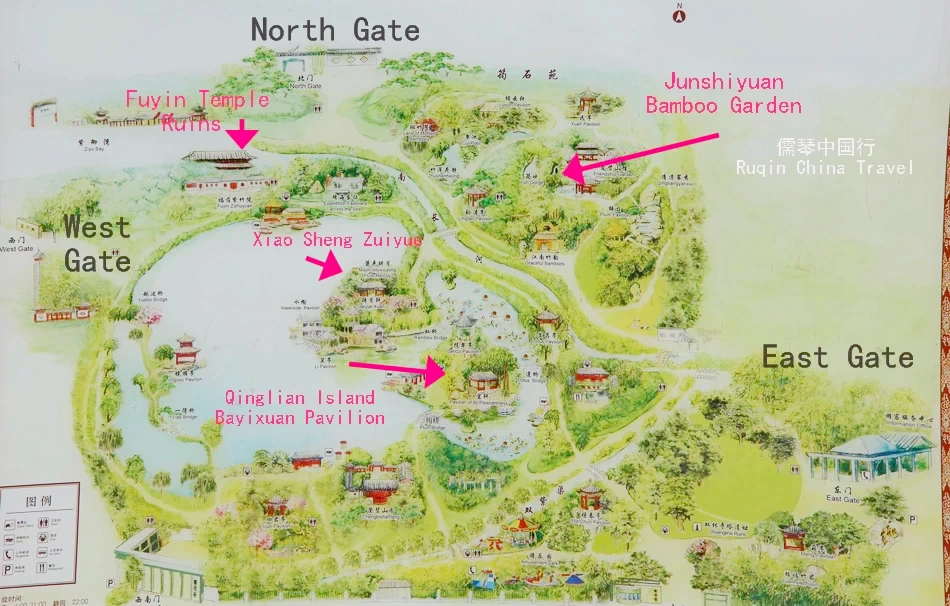
The park covers about 47 hectares (117 acres), with water making up nearly a third of its area. Flowing through the park are the Nanchang River and the Shuangzi Canal, which help shape its unique landscape. The layout features three lakes, two islands, one causeway, one river, and one canal — a balanced mix of water, land, and walkways that invites exploration.
👑The Imperial Waterway: A Royal Route Through Time
Zizhuyuan Park stands out not just for its beauty, but for its deep imperial history. Long ago, this was more than just a peaceful garden — it was part of the royal travel route.
During the Qing Dynasty, Emperor Qianlong and the Empress Dowager often passed through here by boat on their way to Wanshou Temple and Suzhou Street. The park’s grounds even housed a temporary royal palace, where the emperor and his entourage would rest before continuing on to the Summer Palace.
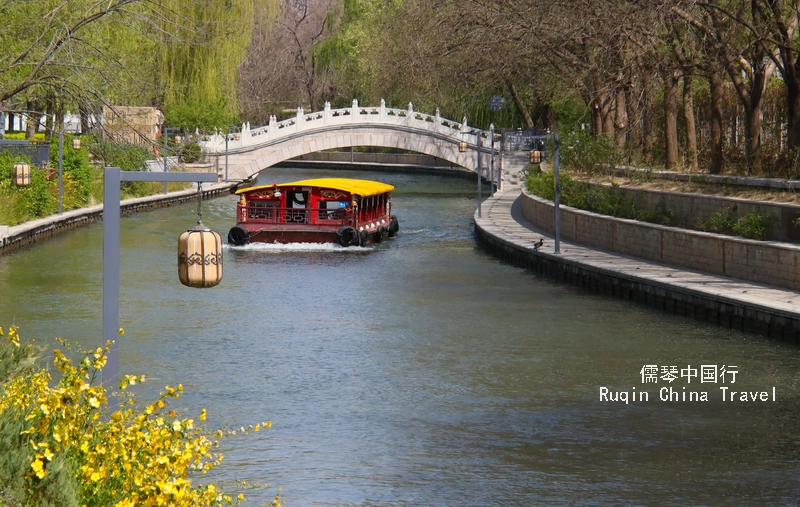
Today, you can still follow in their footsteps — or rather, their wake. Visitors can take a leisurely boat ride from Zizhuyuan Park all the way to the Summer Palace, retracing the same water route once reserved for royalty. It’s a unique chance to enjoy a scenic, historical journey — and see Beijing from a completely different angle.
On the north side of the park, remnants of the old imperial canal and palace structures still remain. Quiet and often overlooked, these preserved sections whisper stories of a time when this waterway carried emperors.
🌿 Garden Design: Where Poetry Meets Architecture
If you love traditional architecture or garden design, Zizhuyuan Park is a true masterpiece. Every corner reflects the elegance of classical Chinese landscaping — carefully planned, yet completely natural in feel.
The park follows the principle of “shaping hills and guiding water to mirror nature.” You’ll find artfully arranged rocks, winding paths, graceful pavilions, and long corridors tucked among bamboo groves and blooming trees. The design strikes a rare balance — combining the bold scale of northern gardens with the delicate charm of southern ones.

Even the names of the scenic spots read like lines from ancient poetry. Places like Shuizhuwu (Watery Bamboo Nook), Junxia (Bamboo Gorge), Banzhulu (Speckled Bamboo Slope), and Zhushen Hejing (Deep Bamboo, Pure Lotus) evoke a dreamlike sense of calm and imagination.
🎋 Cultural Symbolism: What Bamboo Means in Chinese Tradition
At Zizhuyuan Park, bamboo is more than just a plant — it’s a symbol of deep cultural meaning in Chinese tradition.
In Chinese culture, bamboo represents resilience, longevity, happiness, and spiritual strength. Its hollow center symbolizes humility, while its strong joints reflect integrity and upright character. Bamboo bends with the wind but never breaks — a quiet reminder of strength through flexibility.
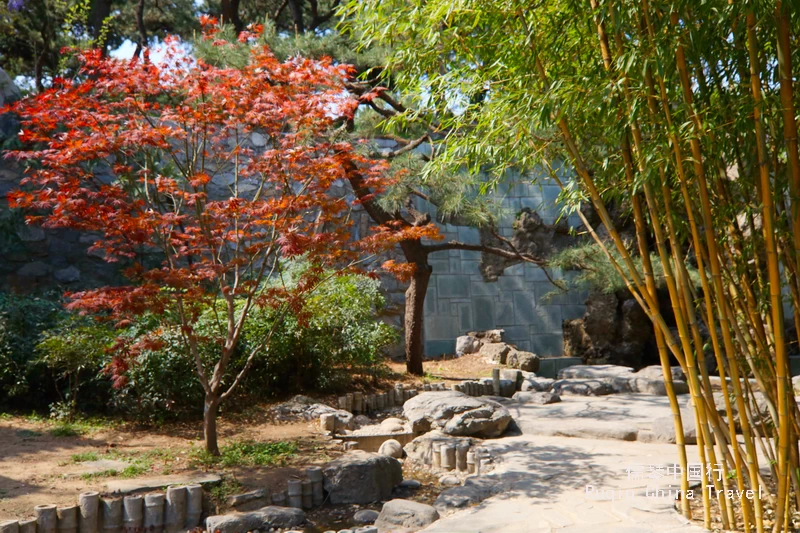
There’s even an old saying: “Bend but don’t snap, yield but don’t break.” This idea captures the balance of softness and strength — a core value in how many Chinese people view life and character.
Famous Tang Dynasty poet Zhang Jiuling once wrote,
“The noble keep their moral heights, the humble are honored for their open minds.”
These lines celebrate the very traits bamboo stands for.
As you stroll through Zizhuyuan’s bamboo groves, you’re not just walking through greenery — you’re stepping into a living story. The park’s landscape and cultural events bring bamboo’s symbolic power to life, offering visitors a quiet but meaningful glimpse into the heart of Chinese values.
⏰ Zizhuyuan Park Opening Hours
One of the best things about Zizhuyuan Park? It’s completely free to enter. In fact, it’s the only royal garden in Beijing that doesn’t charge admission, making it a favorite among locals and travelers alike.
The park is open year-round, with slightly different hours depending on the season:
- Peak Season (April 1 – October 31):
Open from 6:00 AM to 10:00 PM
Last entry at 9:00 PM - Off-Season (November 1 – March 31):
Open from 6:00 AM to 9:30 PM
Last entry at 9:00 PM
If you’re planning to visit any of the indoor cultural exhibits — like the Imperial Palace Exhibition, Wenyue Pavilion, or Youxian Hall — keep in mind that these venues are closed on Mondays. So, it’s best to plan ahead and check schedules if you’re visiting for cultural experiences.
🚇 How to Get to Zizhuyuan Park
The easiest way to reach Zizhuyuan Park is by Beijing Subway. It’s fast, affordable, and tourist-friendly.
Take Beijing Subway Line 4 and get off at National Library Station. Use Exit D, then walk about 200 meters to reach the park’s East Gate. The walk is easy and well-marked.
👉Explore Our Curated Beijing Tours
Even better, National Library Station is also a transfer point for Line 9 and Line 16. That gives you more flexibility, no matter where you’re coming from in the city.
So whether you’re staying near the Summer Palace, Xidan, or Beijing South Railway Station, you’ll have a direct or one-transfer route to Zizhuyuan Park.
📍 Must-See Spots in Zizhuyuan Park
Zizhuyuan Park is full of quiet corners and carefully designed views. Every turn brings something new. The layout feels natural, but it’s rich in cultural detail and traditional beauty.
To help you make the most of your visit, here are the park’s top highlights — each offering something unique and photo-worthy.
🌟 Quick Guide: Must-See Spots in Zizhuyuan Park
| 📍 Attraction | 🌿 What to See or Do |
|---|---|
| Qinglian Island 青莲岛 | Lotus flowers, scenic bridges, water birds |
| Bayixuan Pavilion 八宜轩 | Water reflections, photo views, peaceful seating |
| Junshiyuan Bamboo Garden 筠石苑 | Jiangnan-style buildings, themed bamboo zones |
| Fuyin Temple Ruins 福荫紫竹院 | Ancient architecture, painted beams, quiet space |
| Ziyuwan Dock 紫御湾码头 | Imperial boat ride to Summer Palace, scenic dockside |
| Wenyue Pavilion 问月楼 | Park views, best moon-watching spot |
| Xiao Sheng Zuiyue 箫声醉月 | Bamboo poetry platform, live flute music at night |
🌸 Qinglian Island & Bayixuan Pavilion
Located in the heart of the park, Qinglian Island and Bayixuan Pavilion form one of Zizhuyuan’s signature scenic areas.
Qinglian Island is surrounded by water and linked to the shore by graceful arched bridges. In spring and summer, lotus flowers bloom along the water’s edge. In autumn and winter, reeds sway gently in the breeze. No matter the season, the island offers a different kind of beauty.
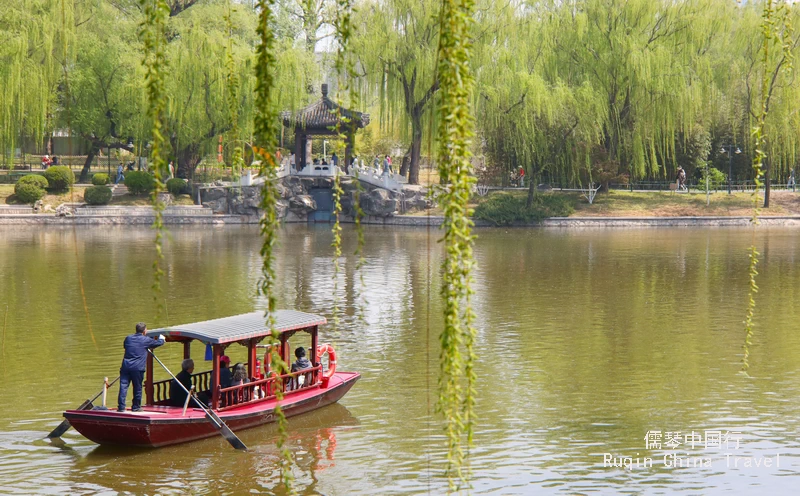
Bayixuan sits right on the water. Its name means “perfect in all seasons and festivals.” From here, you can enjoy reflections of bamboo on the lake, along with distant views of Beijing’s skyline. It’s a top spot for photographers.
Between the island and the pavilion, you’ll often see wild ducks and mandarin ducks gliding across the water. Their presence adds a playful, lively touch to the calm setting.
🎋 Junshiyuan Bamboo Garden
In the northern part of the park, you’ll find Junshiyuan, a beautifully designed garden built in recent years. It features classic Jiangnan-style architecture, with gray tiles, wooden pillars, whitewashed walls, and curved eaves.
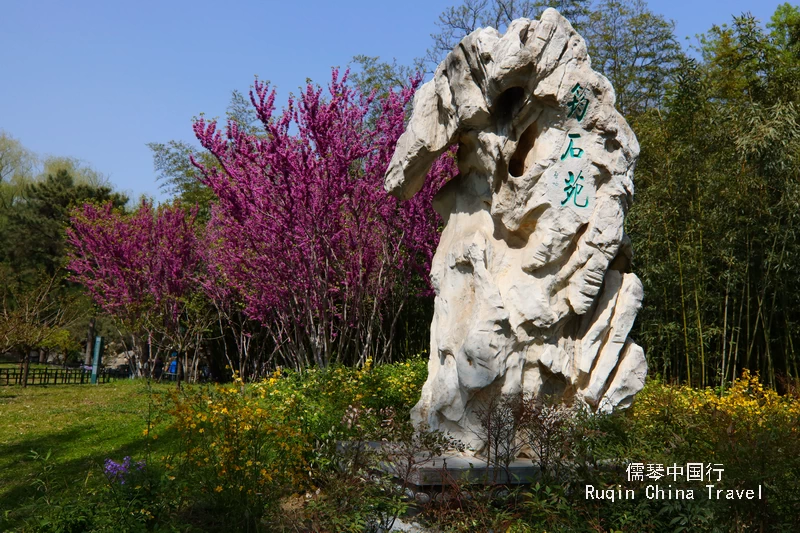
Each corner of the garden highlights bamboo in a different way. Scenic spots like “Jiangnan Bamboo Charm,” “Lotus and Deep Bamboo,” “Green Cloud Pavilion,” and “Spotted Bamboo Slope” offer peaceful paths and elegant views. The entire area feels like a quiet poem brought to life.
🏛️ Fuyin Zizhuyuan Temple Ruins
This is the most historic part of the park. Once a full temple complex during the Ming and Qing dynasties, today it’s a preserved cultural site that requires a small entry fee (¥10).

This area is usually much quieter than the rest of the park. You can admire the temple’s colorful, hand-painted beams in peace. Look closely — each painting tells its own story, like a little window into another world.
🚤 Ziyuwan Dock & Royal Boat Ride
Ready for a royal-style adventure? Head to Ziyuwan Dock, where you can board a boat and cruise along the old imperial waterway to the Summer Palace — just like Emperor Qianlong once did.
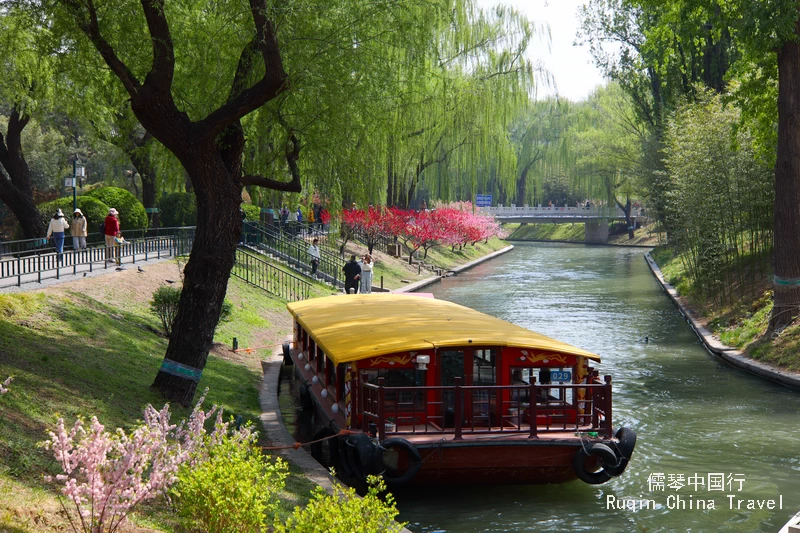
Even if you don’t take the boat, the dock itself is worth a visit. Surrounded by bamboo and water, it’s a scenic spot with a peaceful vibe. Watching the traditional-style boats come and go is an experience in itself.
Boat rides operate from March 15 to late October or early November, with departures at 10:00, 11:00, 12:00, 13:00, 14:00, 15:00, and 16:00 — one every hour.
🌕 Wenyue Pavilion & Xiao Sheng Zuiyue
On the park’s western side, you’ll find two poetic spots tied to Chinese moon culture.
Wenyue Pavilion is a two-story building in ancient style. Climb to the top for a panoramic view of the entire park. It’s especially popular during the Mid-Autumn Festival, when locals come to admire the full moon.
Nearby, Xiao Sheng Zuiyue is a platform by the water. Its design was inspired by the legend of “playing the flute to summon the phoenix.” Shaped like an open bamboo scroll, the platform is engraved with classical Chinese poems about bamboo.
In the evenings, these spots often host traditional music performances. You might hear the gentle sounds of bamboo flute while sipping tea under the moonlight — a perfect moment of peace and beauty.
🗺️ Suggested Route (Approx. 3 Hours)
Start your visit by taking Subway Line 4 to National Library Station. Use Exit D, then walk about 200 meters to reach the East Gate of Zizhuyuan Park. It’s a quick and easy route.
Once inside the park, begin your walk with the Junshiyuan Bamboo Garden (筠石苑). Spend some time exploring these key spots:
- Youxian Hall – a cultural exhibit space (友贤山馆 – 文化展览))
- Jiangnan Bamboo Charm – a peaceful bamboo grove 江南竹韵(竹林景观)
- Deep Bamboo and Lotus View – a quiet lakefront with stunning views 竹深荷净(湖景竹林)
Next, head west toward the Fuyin Zizhuyuan Temple (福荫紫竹院). Here, you can admire the painted beams, walk through ancient architecture, and learn more about the park’s imperial history.
Then follow the lakeside path south until you reach Wenyue Pavilion (问月楼). Step inside to browse cultural displays. If you’re lucky, you might catch a live performance or public lecture — feel free to join in!
Wrap up your visit at Ziyuwan Dock (紫御湾码头). You have two options:
- Take a scenic royal boat ride to the Summer Palace (ticket required)
- Or simply enjoy the peaceful view of the dock, watching traditional boats glide by
This route gives you a taste of Zizhuyuan’s nature, history, and culture — all at a relaxed pace in about three hours.
🌸 Seasonal Scenery & Best Time to Visit
Zizhuyuan Park offers something beautiful in every season. Each time of year brings new colors, moods, and experiences. Knowing what to expect seasonally can help you choose the best time for your visit — based on weather, scenery, and personal preferences.
📋 Quick Glance: Zizhuyuan Park by Season
| 🌤️ Season | 🌡️ Avg. Temp | 🌺 Key Sights | 🧭 Top Activities |
|---|---|---|---|
| Spring | 10°C–20°C | Cherry, peach, and crabapple blossoms | Flower viewing, photography, cultural events |
| Summer | 25°C–35°C | Lotus blooms, shaded bamboo groves | Canal boat rides, paddle boating |
| Autumn | 10°C–20°C | Maples, ginkgos, golden reeds | Walking tours, moon viewing |
| Winter | -5°C–5°C | Snow-covered bamboo and pine trees | Snow photography, Spring Festival strolls |
🌼 Spring (March–May): A Sea of Blossoms
Spring is the park’s most vibrant season. From late March to early May, flowers bloom in waves. Forsythia, Chinese flowering plum, peach blossoms, lilacs, and crabapple trees fill the park with color and fragrance.

Temperatures stay mild, usually between 10°C and 20°C. Mornings and evenings can be cool, so a light jacket is a smart choice. This is also the most photogenic time — perfect for flower lovers and photography fans.
☀️ Summer (June–August): Cool Shade and Lotus Blooms
In summer, Zizhuyuan becomes a popular escape from Beijing’s heat. The dense bamboo groves and wide lakes keep the park 2–3°C cooler than the city streets.
Lotus flowers bloom across the water, and boat rides on the lake or imperial canal are at their most scenic. This is when you’ll truly see why people call it a “floating green canopy.”
Temperatures range from 25°C to 35°C. Dress in light, breathable clothing. Don’t forget sunscreen, a sunhat, and plenty of water — early mornings and evenings are the most comfortable times to visit.
🍁 Autumn (September–November): Golden Leaves and Crisp Air
Fall paints the park in brilliant colors. Red maples, golden ginkgos, and fluffy reed grass light up the landscape. Their warm tones contrast beautifully with the ever-green bamboo, creating a scene that feels like a living painting.
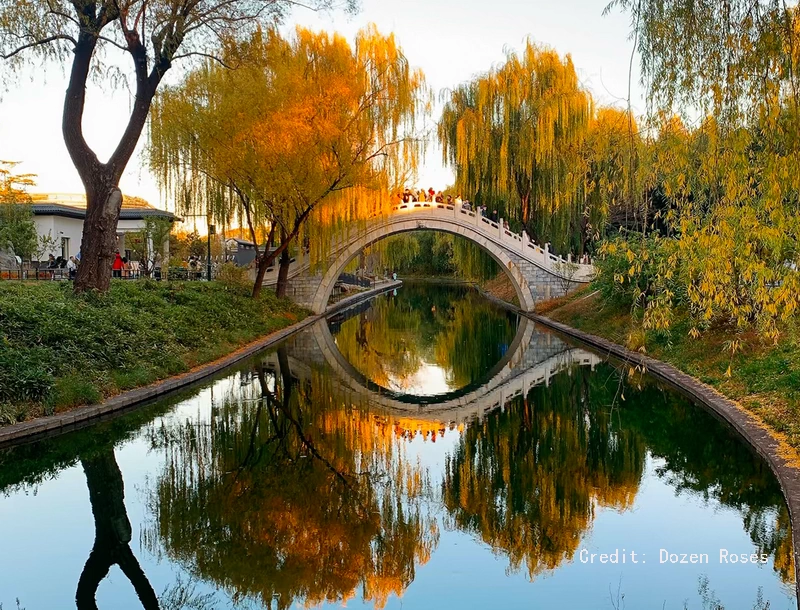
The weather is cool and dry, with temperatures around 10°C to 20°C. It’s ideal for walking tours, leaf peeping, and even moon-viewing around the Mid-Autumn Festival.
❄️ Winter (December–February): Snow and Stillness
In winter, Zizhuyuan turns into a quiet wonderland. A fresh snowfall coats the bamboo, pines, and walkways in white. The park becomes calm, clean, and almost magical — just like the line from a classic poem: “Snow on bamboo, mirrored by pine.”
Beijing winters are cold and dry, with average temperatures from -5°C to 5°C. Wind is common, so bundle up. Wear a down coat, warm boots, gloves, and a scarf. If you catch the park after a snowfall, it’s truly a sight to remember.
👉Explore Our Curated Beijing Tours
Zizhuyuan Park may not be as famous as Beijing’s big-ticket attractions, but that’s exactly what makes it special. It offers a quieter, more reflective experience — where nature, culture, and history blend seamlessly.
Whether you come to walk among bamboo groves, discover poetic corners, enjoy a lakeside breeze, or follow the path of emperors on the water, Zizhuyuan invites you to slow down and soak it all in.
It’s not just a place to visit — it’s a place to feel. A space where the past lingers in the air, and every season paints a new story.
So next time you’re in Beijing, take a little detour. Let Zizhuyuan Park surprise you.
